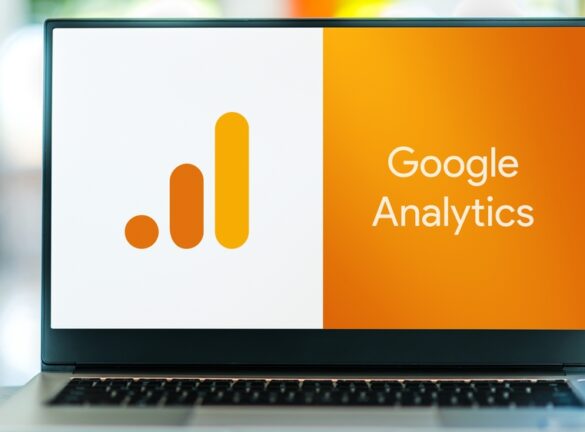
A Lesson in Investing in Specialist Tools and the Expertise to Best Use Them
If there is one thing I’ve learnt in life – and I’ve learnt a few things – it’s that you need the right tool for the job. I’ve learnt this in my work life but primarily in my personal life and admittedly, often the hard way. By “the right tool” I mean the thing that enables doing the job effectively, efficiently and without all the consequences that come from doing it without the right tool.
Growing up I, like many, looked up to my older cousins, even those who were marginally older than me; they all seemed so cool, a coolness that I could only ever aspire to. Always a few steps behind I was an eager student, hoping to (one day) walk in their shoes. I keenly remember stepping, in awe, into the shrine that was my older cousin’s bedroom for him to showcase to me his far superior music collection – Prong and Foo Fighters are the ones I remember, both of which made my ears burn with their seeming prohibition. This was the same cousin who played the outro to the fourth track of Pantera’s Vulgar Display of Power at fullest blast during a gathering of my aunt and uncle’s church friends (man, he was cool!). Wide-eyed, the angels singing, I would find myself surrounded by the explicit exhibition of my idol’s interests and loves, specifically; pictures of maniacs riding the large, smooth curl of Teahupo’o (surfing) and others whipping through the air on loud, fire-hearted machines at Glen Helen. I am sure there were others on display but those are the two themes that really struck me. I would go into his room on each visit just to see them. It was in this room that the idea of riding motorbikes was born – I mean look how cool Jeremy McGrath is, even off the bike with his long middle-pathed hair (got to love the 90s!). From that time, I was determined I would own and ride a motocross bike – and have long middle pathed hair (evidence of which is buried … I hope).
For years, I worked hard and saved all the money I could to eventually buy the first (second-hand) Kawasaki KX125 I saw. Large, green, fast, noisy (and missing a kick-starter); I just had to have it. As it turns out machines made for racing do not age particularly well and being made for high performance they also demand considerable maintenance, exponentially more so with use and this one was used. Having spent all my hard-earned cash on said machine and just enough safety equipment to survive, I had none left for the expertise of mechanics so thought I’d take care of that part myself. I mean, how hard could it be, it only has one piston?
Aware that I knew nothing about looking after my mechanical baby I had gone to the effort of sourcing what felt like a black market workshop manual from Kawasaki; naturally they wanted you to pay them to service your machine, so these were hard to get hold of but luckily I knew someone (as is usually the case) – my mechanic friend photocopied the manual for me.
As I poured over the schematics of the anatomy and the steps for servicing, I noticed many references to specialist tools; “flywheel puller”, “seal press”, “spring clamp”, “micrometer” etcetera. “What! Surely these can’t all be absolutely necessary?” and even if they were, I’d scrounged all the coins in the couch for my black-market manual. Specialist tools have specialist price tags – but I’d have to look after the bike if I was going to ride. Instead, I used my discretion as to whether the specialised tools were necessary. Instead of “flywheel puller” I used a swimming pool cover lever and a mallet (that’s a hard one to explain), instead of a torque wrench I used a good ol’ spanner, instead of a fork oil gauge I used a PVC tube and my mouth. Just a few examples of my backyard mechanic techniques.
It was in these moments that I learnt the true value of specialist tools. I wasted hours trying (and eventually, angrily succeeding) to remove the flywheel – it should have been a five minute job. I stripped an engine bolt and a sump plug (both important if you’re wondering) not using the torque wrench (thank goodness for Helicoils). Using my mouth as the suction element of the fork oil gauge (I couldn’t even wait to get a syringe) meant I inevitably found out what fork oil tastes like (bitter and metallic, I don’t recommend) and subsequently had dry mouth for a week. My impatience to ride again and dismissal of the need for specialist tools meant I was often fixing the things I had broken rather than riding – the goal I ultimately wanted to achieve – or bearing other unpleasant consequences.
You’re right, so far this story has nothing to do with advertising, but the lessons learnt most certainly do. On this site, reading this post, you’re likely aware of the overwhelming array of choices you face when it comes to advertising; channels, strategies, platforms, attribution solutions, formats, creative styles etcetera. The sheer array of options is enough to invoke the shudder of fear (much like the “fork oil shudder of disgust”). We’ve talked about some of those choices on this website; choosing the right data visualisation platform, making the right attribution modelling choice, leveraging Markov modelling for deep channel insights, which paid search bid strategies to leverage, how to best use PR for launching a new brand and much more. We’re generous like that.
Much like caring for a performance racing machine, choosing the right tools for your performance advertising aspirations requires expertise and experience, if you’re going to be leveraging the right channels, strategies and formats to achieve your KPIs – which you’ll also need the right tracking and attribution tools to understand.
Just look at the attribution considerations across Google Analytics and Campaign Manager – two of many tools available – for illustration. What’s the right tool for the job, you ask? It depends. Are you activating exposure-based or interaction-based media (or both), what level of detail do you require to make the most effective decisions for your media, what does the conversion journey look like, do your assets and infrastructure allow or hinder implementation and accuracy, and ultimately how do you assess the collective business impact of it all.

Investing in expertise from specialists, the rights tools for your objectives as well as the setup and utilisation of those tools will be worthwhile. You will save money, time and anguish as well. Some reading this will have experienced this. “But this is not Utopia” I hear you say. Sometimes the help needed is in the journey towards the best solution, which is an evolutionary process, especially in an industry like ours which is evolving so quickly; needs, capabilities and opportunities are always changing.
Had I used my system 2 thinking I probably would have spent more time enjoying the thrill of what I dreamt of and worked so hard to achieve. Instead of investing in the expertise and tools that would have inevitably saved me a whole lot of time, frustration and yes even money, I chose my own way and became a better mechanic than rider in the end. I achieved something but not the thing I really wanted to. Anyone have a time machine lying around?
Bonus lesson: read the instructions carefully, the details are important, there may be a (very expensive to replace) right-hand thread in there somewhere.






